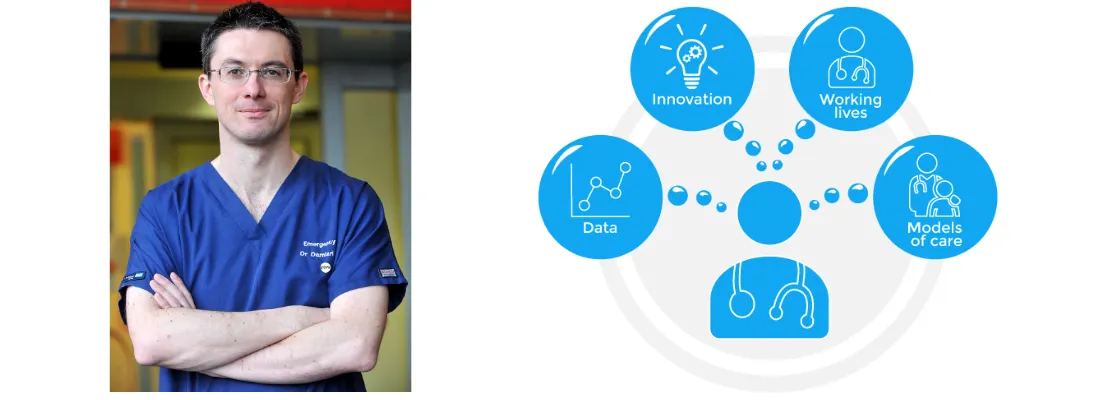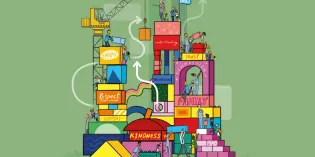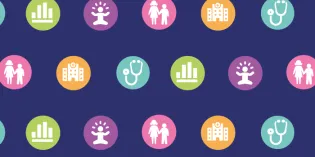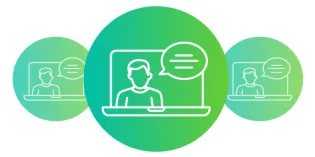
Update Paediatrics 2040 was launched in March 2021 - see our microsite
Innovation is seeing what everybody has seen and thinking what nobody has thought.
Learning from the past
There are many innovations that we now just take for granted. In the pre-ultrasound era, how would you have confirmed a diagnosis of intussusception in an agitated, unwell-appearing toddler? Prior to universal vaccination, imagine a waiting room of hot febrile children in which diptheria, pertussis or pneumococcus would be a common diagnosis. And even non-medical innovations have greatly transformed our ability to communicate with families and children; the internet didn’t really exist 30 years ago.
We are universally bad at predicting how new innovations will transform healthcare by being both overly conservative and optimistic about the speed of change. We expect that new techniques and medications will be implemented with much greater speed than is possible, at the same time being surprised by how quickly others become common practice. Part of the reason for this is a misunderstanding of the term innovation itself. As improvement scientist and surgeon Simon Dodds explains:
Invention, innovation, investigation and implementation are four stages of the “improvement” process but they are different. Invention is when something uniquely new is created – by design or accident. Innovation is when we do something new for us (but may not be new for others). Investigation is when we explore how the new thing fits with the old thing – does it work for us in our specific context? And implementation is when we are past the “tipping point” and the paradigm starts to shift.
Challenging the status quo
Placing innovation in the context of improvement makes it more tangible and better highlights the challenges it takes to transform healthcare. The current health system remains in a precarious state, especially in paediatrics, with a challenging workforce situation and ever increasing demand and expectation. Those working in child health have always been good at maximising what we can do currently, rather than getting too concerned about what the future may bring. Dependent on your source Jugaad is a colloquial Hindi word which implies a work-a-round solution to a problem. Its direct translation is ‘machinery’ but in management vocabulary it describes cheap resources which solve complicated issues. It is often used in the context of ‘frugal innovation’, with the Jugaad approach cited as a mechanism to aid the NHS in difficult periods.
No immediate cash injection into the healthcare system looks likely at present. And even if it was suddenly to occur, it wouldn’t solve those inefficiencies, bureaucracies and productivity challenges which are not directly amenable to financial resolution. However, it’s not a sustainable situation to continue in the status quo, so it’s beholden on all paediatricians to be able to innovate and implement technologies and practical solutions.
Our innovation workstream
The Paediatrics 2040 innovation workgroup aims to set out the landscape of what might be on offer in the next 20 years if we create the conditions to enable the most effective invention and innovation to happen. We are reviewing the literature about the process of innovation in respect of child health and, using experts in their fields, creating a repository of subjects (from genomics to wearables) to examine as case studies. Importantly we will also be highlighting what conditions are needed to allow innovation to flourish. While admittedly a regional survey, Gilbert and colleagues determined 91.2% of respondents have had ideas for improvement in their workplace but only 10.7% have had their ideas for change implemented1 . In addition, the bureaucracy associated with research and innovation can stifle ideas even if determined to be beneficial to test.
What next?
The College have just released a survey on members perceptions of what paediatrics will look 20 years from now. History suggests we really don’t know what the future holds but it is likely we can realise far more than we are currently doing if we all adopt an innovation mindset.
Tell us what you want to see in 20 years time - take our survey [survey closed on 1 March]
- 1Gilbert A, Hockey P, Vaithianathan R, et al Perceptions of junior doctors in the NHS about their training: results of a regional questionnaire BMJ Quality & Safety 2012;21:234-238.










